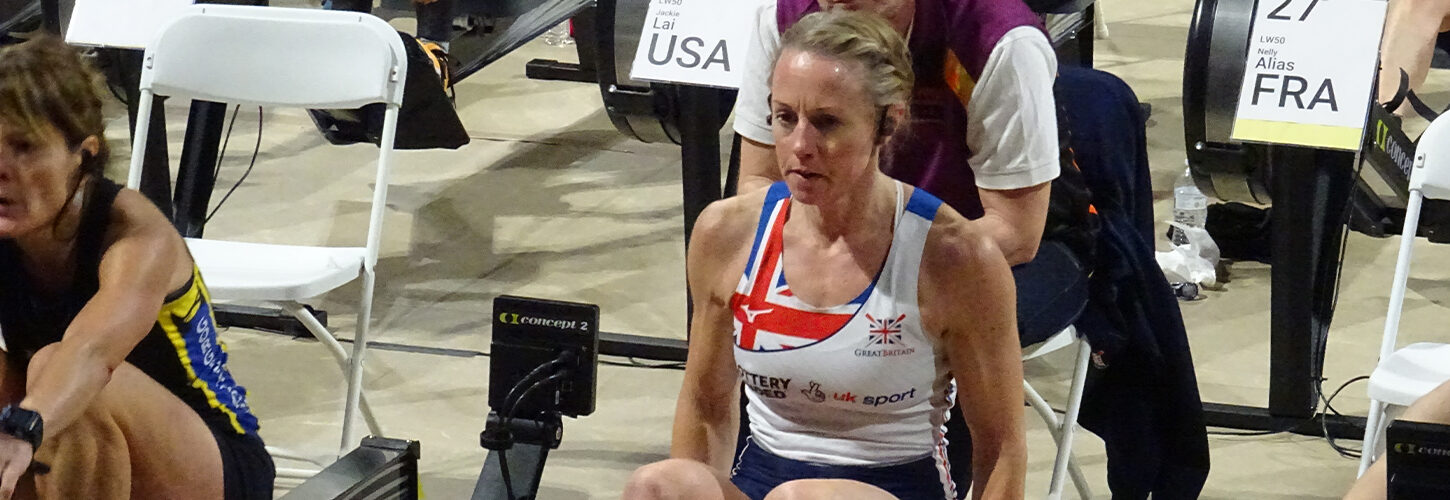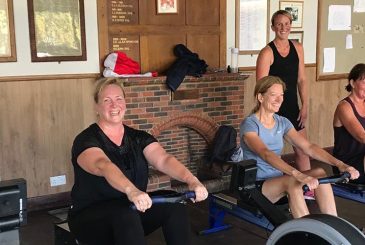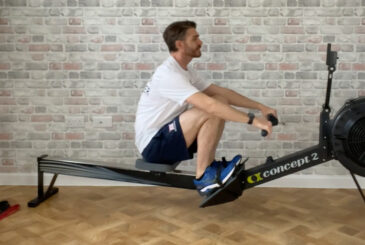In this article Cam Buchan talks us through the reasons why the 2k rowing machine test on is the perfect challenge for any rower, before sharing some top advice to put into practice the next time you face the distance
The 2,000m row – or 2k test – strikes fear into the hearts of many when those dreaded four digits appear on their programmes. Why is this though? Why is this distance tested at all? Should you give it a try?
Why do people fear the 2k test?
If you have ever seen someone on the indoor rowing machine – or erg – in the middle of a 2k test, it almost never looks comfortable. There are horror stories everywhere of people falling off the erg post-2k; of people pushing themselves to vomit even before they are finished. For someone wanting to test their fitness, given these anecdotes, it is no wonder there is a fear of the 2k challenge.
Why two kilometres?
Before we talk about what the 2k actually tests, it is interesting to note the genuine reasoning for the test itself.
The biggest reason is that it is the distance at which rowers on the world stage race over. It makes an easy comparison to cover 2,000m on the rowing machine versus 2,000m on the water.
I am not a world class rower though, so why should I complete the 2k test?
This is a question often brought up as an attempt to escape the test itself. In reality the 2k test is performed by thousands of people globally at all abilities and age groups. It is a great way to compare yourself to anyone around the world. If you head to the Concept2 logbook you can see that in 2021 alone, almost 25,000 people submitted their 2k score from across all age groups. You don’t have to be able to do the fastest times to be competing against people all over the world!
The rowing machine uses up to 85% of the muscles in the body. When doing a 2k, you push these muscles to do as much work as they can. On the bike or treadmill, you can push very hard but the upper body is barely worked. You can dig yourself into a metaphorical hole riding or running, but the amount of muscles that are truly fatigued do not compare to the rowing machine. An erg workout isn’t just a leg-burner; it’s a whole-body-burner.
What does 2km actually test?
The 2k row tests you both physically and mentally. It is the ideal distance to empty the proverbial tank. Not short enough for an all-out sprint but not long enough to row at a steady pace. It employs both aerobic and anaerobic capacities in the same test.
It not only tests how well you can breathe and maintain higher heart rates but also your ability to physically and mentally push through the burning pain of lactic acid build-up.
Mentally, regardless of whether the test itself is going well or not, you will start to question yourself and your abilities, “have I started too fast?”, “am I going to make it to the end?”. After doing a 2k test on the rowing machine and pushing through those questions, regardless of time, you can come away with a better understanding of what you are capable of. How did you answer the questions that crept into your head? Did you keep pushing through the burn when you felt like you couldn’t?
If you feel good through the last 500m, that is when it is time to push on
Now, whether you’ve never done a 2k or you are contemplating re-testing yourself, you may be thinking “maybe I’ll give it a pass” after reading this far. The 2k test doesn’t always have to end up in a dribbling mess. Just as with any other test, the harder you push, the harder it gets, no matter which modality you use. That said, here are some tips to get the best out of yourself on your next 2k test:
Plan. Plan. Plan. This is massive and arguably the biggest part of a successful 2k test. If you strategise and plan out your test, you can give yourself confidence to be able to hit certain speeds at different times to get yourself through the dark middle section of the 2k.
Stick to your plan. Alongside the plan itself, you have to stick to said plan. Say you have a target of seven minutes and 30 seconds, you don’t want to be at a 6:30 pace after the first 500m. When that sort of mis-pacing happens, the pain will inevitably end up being much worse than if the plan was stuck to throughout the test. Be realistic with your plan. If you feel like the splits are too slow, don’t change anything mid test. Adrenaline will be pumping and if you are lucky enough to have people shouting for you, you will no doubt feel great through the first few hundred metres. The test is much longer than that. If you feel good through the last 500m, that is when it is time to push on. If you finish the 2k and think you could have gone a lot faster, you will have learned a valuable lesson on your fitness and you can always set the monitor up for another 2,000m!
Hopefully that sheds a little light on the beast that is the 2,000m row and gives you a little confidence to try it for yourself. Wouldn’t it be great to test yourself and see those numbers improve over time? If you feel ready to take that next step, I offer customised training programs to help. You can contact me on Instagram if you are interested or have any questions.










